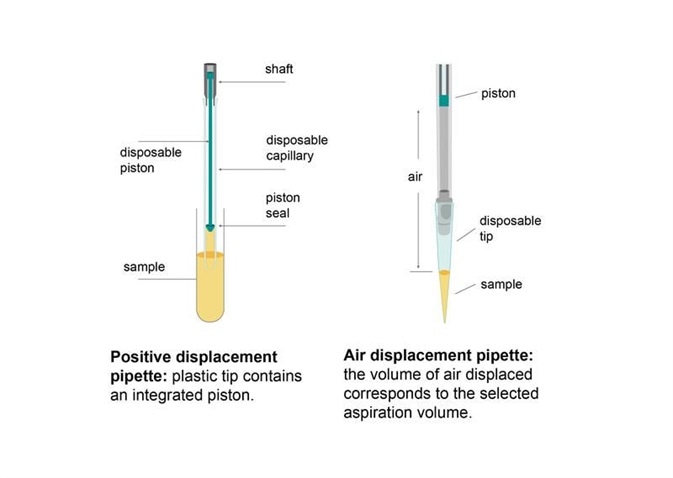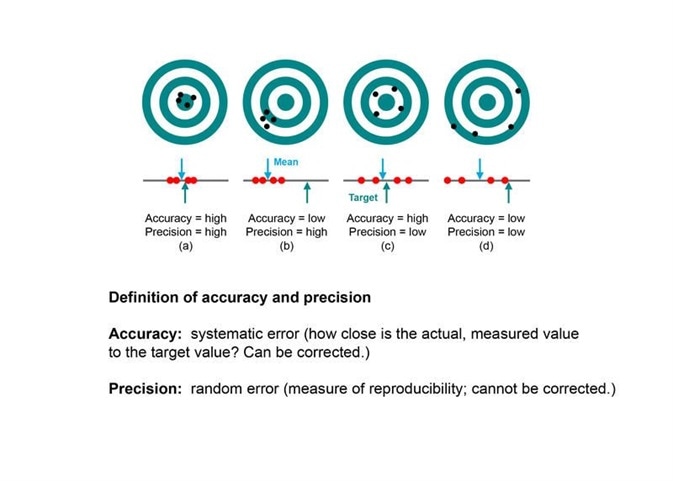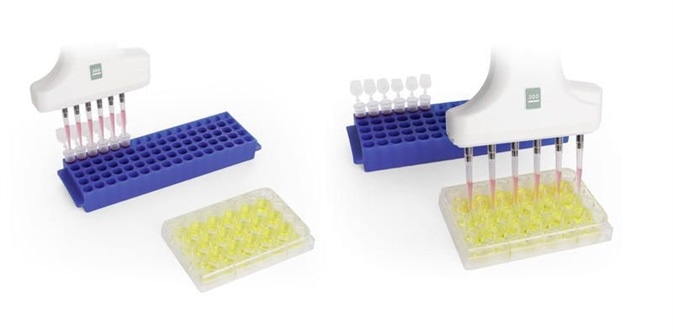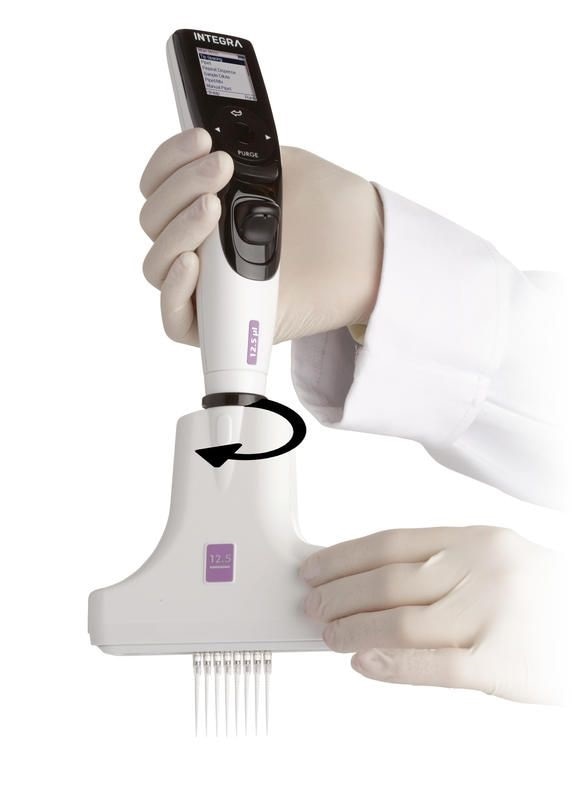Do you run a laboratory and frequently get confronted with questions about how to guarantee reliable results or improve pipetting efficiency? Are you a lab professional that spends multiple hours a day holding a micropipette? If this is the case, selecting the right pipette could be the key to the success of your work. Not only can it boost your efficiency, but it also ensures the performance of your experiments.
This article will guide you through the important factors to consider when choosing the correct micropipette for your application.
Reliable Results
Scientists require pipettes that are reproducible and accurate to ensure the success of an experiment. The following factors should be considered to improve your pipetting results:

Physical properties of your liquid: there are three broad categories of liquids: viscous, aqueous and volatile. Air displacement pipettes are often the first choice as most liquids are of the aqueous type.
The majority of liquids will work perfectly well with air displacement pipettes. However, if you are working with very viscous or volatile liquids you may wish to consider positive displacement pipettes. The correct pipetting technique is essential to achieving excellent results with air displacement pipettes regardless of the liquid type.

Precision and Accuracy: The most important aspects that affect pipetting results are precision and accuracy.
INTEGRA advises you to look at the following criteria in order to achieve maximum pipetting reliability.
- Transferred volume: Generally, you should always choose the smallest pipette capable of handling the volume required. Accuracy decreases when the set volume is close to the pipettes minimum capacity and so this is important. For example, you will get poor results if you dispense 50 μl using a 5,000 μl pipette. If you use a 300 μl pipette you will achieve better results but using a 50 μl pipette is ideal.
- High quality tips and pipettes: Pipette tips can leak, loosen or fall off and this is a common issue in laboratories. It is caused by using universal pipette tips because these tips need to be ‘hammered on’ and this stretches the pipette tip rim.
This in turn can cause misaligned or leaking tips and even cause the tip to fall off the pipette completely. If you choose micropipettes that were designed together with the tips it ensures secure connections and tips which will not leak or fall off.
- Color coded pipettes and tips: Color coding helps you to choose the correct tips for your pipette.
- Volume adjustment locking: Due to unintentional plunger turns, volumes set on traditional manual pipettes can change whilst pipetting. Some pipette manufacturers have created volume adjustment designs that prevent unintentional volume changes while pipetting.
- Easy calibration: The micropipettes that you use should be easy to calibrate. Some electronic pipettes have features such as the ability to set a calibration reminder or to save the calibration history and this is useful.
Efficiency
It is important to be as efficient as possible whilst keeping pipetting processes reliable and consistent when in a high throughput setting. Using multichannel and/or electronic pipettes is just one of the many ways to improve your pipetting efficiency. The following criteria help you to know whether or not a multichannel or electronic pipette could benefit your applications:

Transfer from tubes to plates using a VOYAGER pipette
Which vessels are you using? Transferring samples between different formats of labware can become tedious and prone to errors when using single channel pipettes. Multichannel pipettes allow the transfer of multiple samples at once which improves efficiency and helps to prevent repetitive strain injuries (RSI) and pipetting errors.
Parallel transfer or multiple samples between different labware sizes and formats is possible with pipettes that can change tip spacing during pipetting.
Repetitive tasks: Electronic pipetting can be very helpful if you dispense multiple aliquots of the same volume because it allows repeat dispensing without needed to refill the tips.
Versatility: Most electronic pipettes offer multiple different modes which makes your pipetting tasks more efficient. These include: variable dispensing, reverse pipetting, programmed serial dilutions and many more.
Ergonomics
One of the most common tasks carried out in laboratories is pipetting. Lab professionals often spend numerous hours pipetting in every day. This can result in discomfort or even lead to hand or arm injuries in more serious cases. Considering the following features when choosing a pipette can help to avoid these potential risks:

VOYAGER Pipette with a handle which can turn for improved ergonomics
Grip design: The pipette should comfortably fit in the hand of both left- and right-handed users.
Weight: Use micropipettes that are well-balanced and lightweight, with the mass in the center for improved stability.
Volume adjustment: It should be as fast and comfortable as possible to adjust the volume which will help to avoid unnecessary strain on the hands.
Tip loading and ejection force: Ejection force and tip loading may require more force than pipetting and so presents a potential risk for injuries. This is especially true in high throughput settings. Pipette tips should snap into place with minimal force, provide a secure connection and still eject just as easily.
Having the pipette in your hand for the shortest amount of time possible should be the goal of any ergonomics-focused task.
About INTEGRA
 INTEGRA provides innovative solutions for Liquid Handling and Media Preparation applications which serve the needs of their customers in research, diagnostics and quality control laboratories.
INTEGRA provides innovative solutions for Liquid Handling and Media Preparation applications which serve the needs of their customers in research, diagnostics and quality control laboratories.
Their instruments and plastic consumables are developed and manufactured in Zizers, Switzerland and Hudson, NH USA. In order to remain close to their customers, they maintain a direct sales and support organization in North America, the UK, France and Germany, as well as a network of over 100 highly trained distribution partners worldwide.
In recent years they have focused on developing a new and technologically advanced range of handheld electronic pipettes which are simple to use and meet the ergonomic needs of their customers.
Today they are proud to offer the widest range of electronic pipettes in the market spanning a range from single channel pipettes up to 384 channel bench-top instruments.
Sponsored Content Policy: News-Medical.net publishes articles and related content that may be derived from sources where we have existing commercial relationships, provided such content adds value to the core editorial ethos of News-Medical.Net which is to educate and iform site visitors interested in medical research, science, medical devices and treatments.